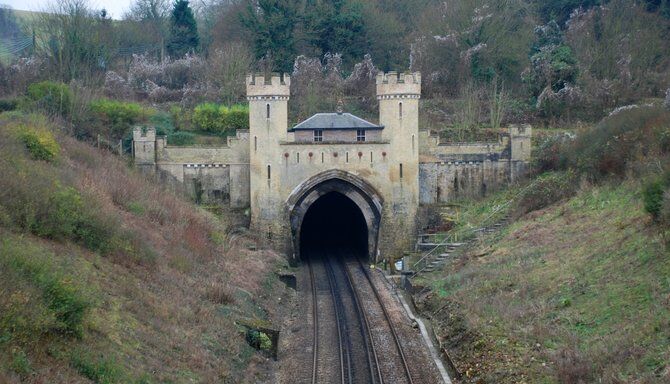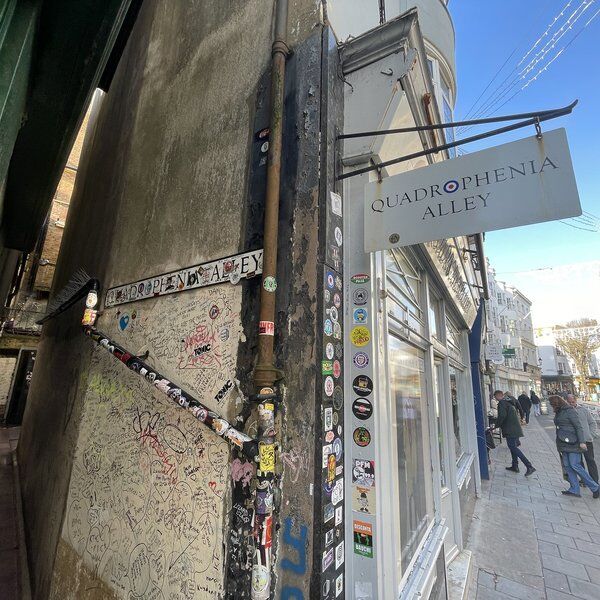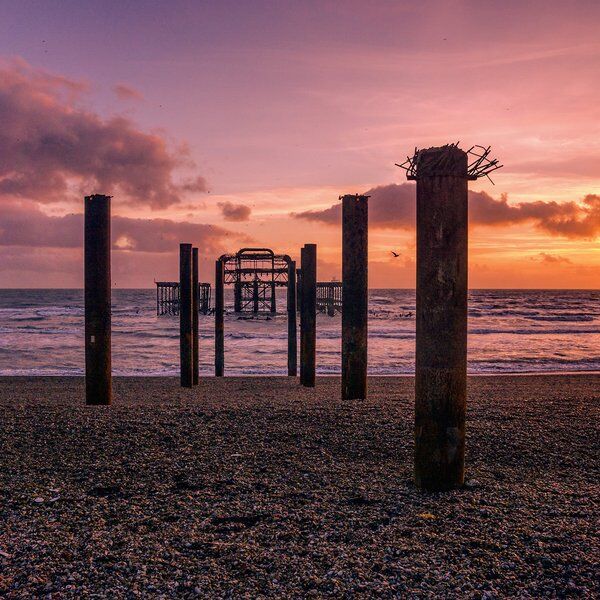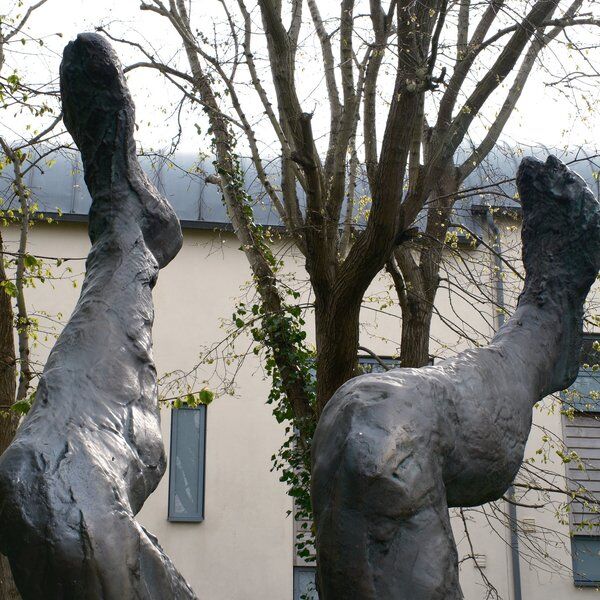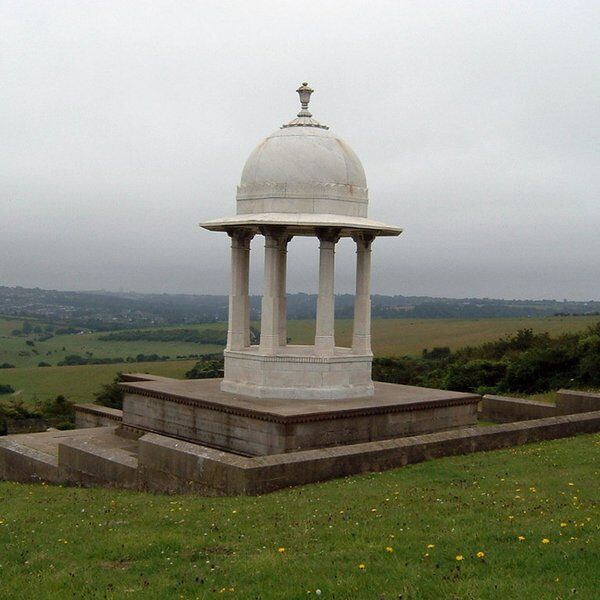Discover the Mysteries of Clayton Tunnel
Clayton Tunnel, featuring a castle-like cottage complete with ornate turrets on top of its northern entrance, is a railway tunnel etched into the South Down hills. Dating back to 1841, this architectural marvel was an integral part of the railway network connecting Brighton and London. However, as beautiful and useful as the Clayton Tunnel and North Portal is, it has been truly undermined by the tragedy of its sombring history.
Clayton Tunnel’s history is marked by the devastating rail crash on 25th August 1861, an event that claimed 23 lives and left 176 passengers injured. Occurring just five miles from Brighton, this tragedy underscored the urgent need for enhanced safety measures, prompting widespread reforms in railway signalling protocols across the UK and beyond. Today, it remains an essential link along the London to Brighton line.

Creating the Clayton Tunnel
The Need for the Clayton Tunnel
Clayton Tunnel in Brighton was built to connect London and Brighton via railway. Brighton began to flourish as a tourist destination in the early 19th century, with seaside attractions such as the Brighton West Pier amongst the highlights. In recognition of this, the London, Brighton and South Coast Railway Company sought to enhance transportation links from London.
Chief engineer John Urpeth Rastrick, selected the route, William Hoof, known for his expertise in canal tunnel construction, was tasked with the build. However, the rugged terrain posed significant challenges, particularly the rolling hills of the South Downs.
The Tunnel
To overcome these obstacles, a series of tunnels were constructed along the route. Construction on the Clayton Tunnel commenced in 1838, it would become the longest and most strategic of these tunnels on the Brighton mainline, spanning over a mile and a half in length.
Bricks for the tunnel were crafted onsite, using local materials. Ten air shafts dot the route, with the deepest plunging 200 ft into the earth. In the Victorian era, traversing dark tunnels in open carriages was considered a frightening affair, prompting efforts to brighten the tunnels. Gas lighting aimed to illuminate the passage for travellers but proved impractical as the trains extinguished the lights in transit.
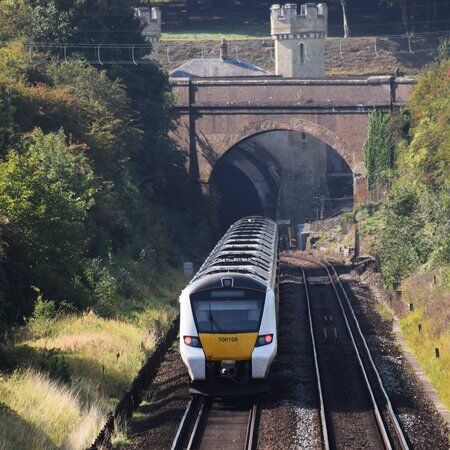
Opposition to the Clayton Tunnel
The decision to carve the railway through the 270 ft of South Downs rock sparked controversy among residents of surrounding towns and they began to campaign for an alternate route. Nonetheless, work continued, culminating in the completion of the tunnel after 3 years by the hands of 6,000 workers.
The North Portal and Tunnel Cottage
Supported by two stone arches, the striking Gothic structure known as the North Portal, resembles a cathedral carved into the hill. The castellated design is topped with two octagonal turrets. The turrets were repurposed as signal towers in 1849, while a quaint little red-brick cottage was built between them in the same year.
Originally housing the tunnel's caretaker and family, this Grade II listed building now serves as a private residence. Despite its remote location, Tunnel Cottage has its share of peculiar tales, including an incident during chimney sweeping in the 1970s that disrupted train operations. Today, the cottage continues to witness the constant flow of trains passing beneath.

Tragedy Strikes in Clayton Tunnel
The 25th August 1861 marked one of the darkest days in British railway history. The Clayton Tunnel train crash occurred due to a sequence of errors in signalling and communication, which resulted in a significant loss of life.
Chain of Errors
Signalman Henry Killick, stationed near the southern entrance of the tunnel, was responsible for controlling the signals. The system was designed to return to "danger" after a train passed, but a failure in this mechanism led to a fatal oversight. Three trains departed Brighton within a span of seven minutes, laying the foundation for disaster.
Misinterpretation Leads to Collision
With the first train still in the tunnel, Killick failed to reset the signal in time, allowing the second train to enter. Despite Killick's attempts to signal the second train to stop, miscommunication led to a misunderstanding between signal boxes.
A message indicating the tunnel was clear, intended for the first train, was misinterpreted by Killick as clearance of both trains. Consequently, he permitted the third train to enter the tunnel, unknowingly setting the stage for a catastrophic collision.
Inquiry and Accountability
Following the accident, a nine-day inquest was conducted into the lapses in safety protocols. While Charles Legg, the assistant station master in Brighton, was found guilty of negligence for allowing trains to depart with inadequate spacing, no fault was attributed to the signalmen involved. Despite initial accusations, Legg was later acquitted of manslaughter charges.
Legacy and Lessons Learned
The Clayton Tunnel disaster highlighted the risks of using outdated signalling systems and emphasised the need for improved safety measures and communication protocols. In response to the tragedy, reforms were implemented, including the adoption of the block system to enhance safety across Britain's railway network.
The Haunting of Clayton Tunnel
Following the tragic train crash tales of supernatural activity gained popularity. Witnesses recounted hearing eerie screams and the unsettling sound of metal crunching within its confines. There were reports of ghostly figures lingering near the entrance, particularly in the vicinity of the portal, where an apparition known as 'Charlie' is said to roam near the sealed entrance by the ventilation shaft.
Renowned author Charles Dickens is believed to have drawn inspiration from the Clayton Tunnel disaster for his globally-celebrated horror-mystery novel, 'The Signal-Man'. This chilling tale vividly portrays the haunting echoes of bells and the malfunctioning telegraph needle, mirroring the tragic events that unfolded in the tunnel and the supernatural rumours that began afterwards.
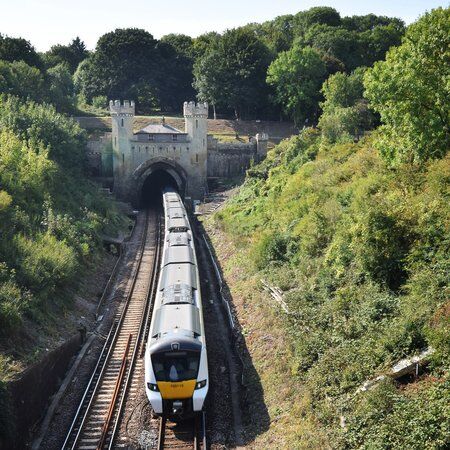
Explore Brighton with CityDays
The best way to discover more hidden gems around Brighton is to take your time and, ideally, have a pre-planned route that takes you past all the noteworthy nooks and hidden gems.
We can help you there!
We have two brand-new trails that combine the fun of an outdoor treasure hunt with the historical facts and whimsical trivia of a walking tour.
Answer riddles, solve puzzles and learn more about Brighton's history in a new and interactive way!
Take the stress out of planning your visit to Brighton and book your adventure today!
Not visiting Brighton this time? Don’t worry, you’ll find us all over the world.
